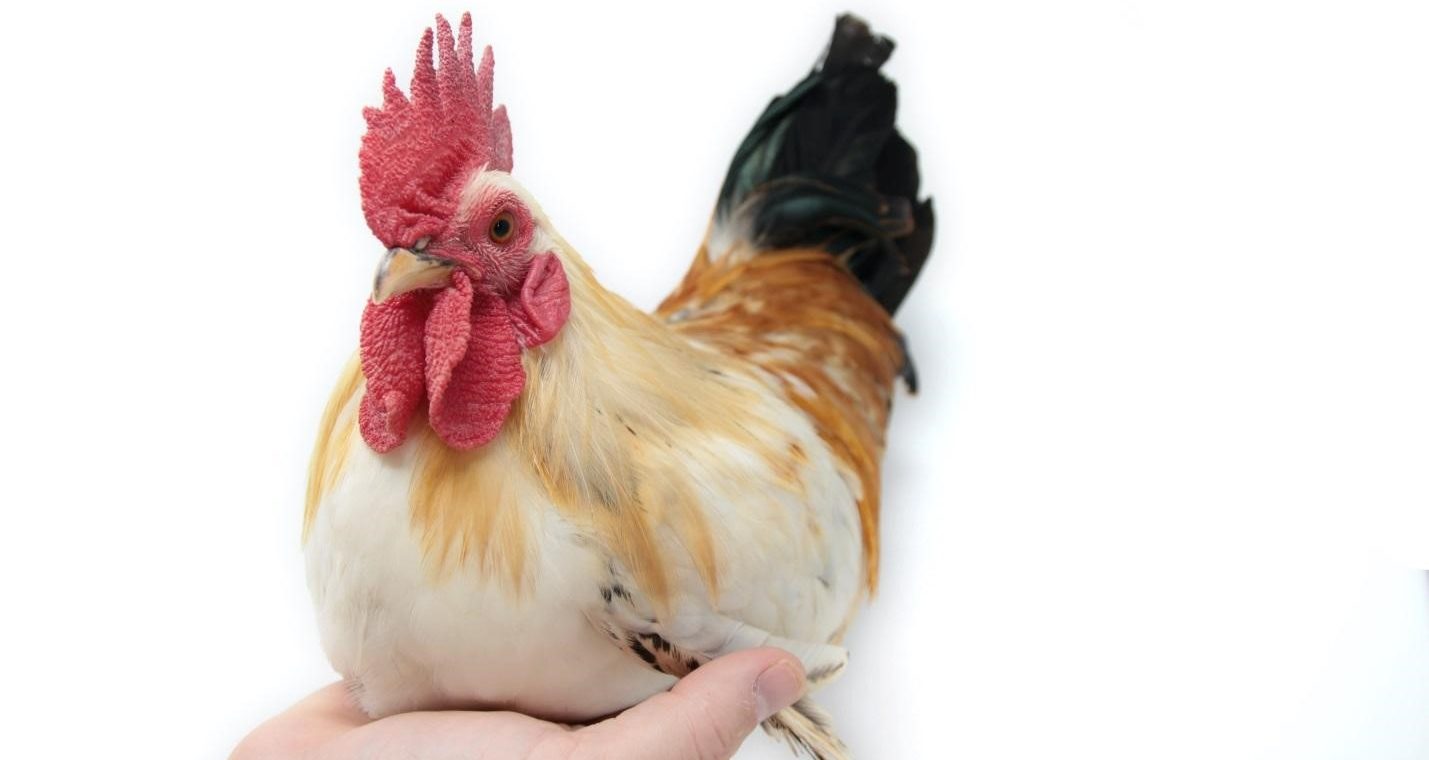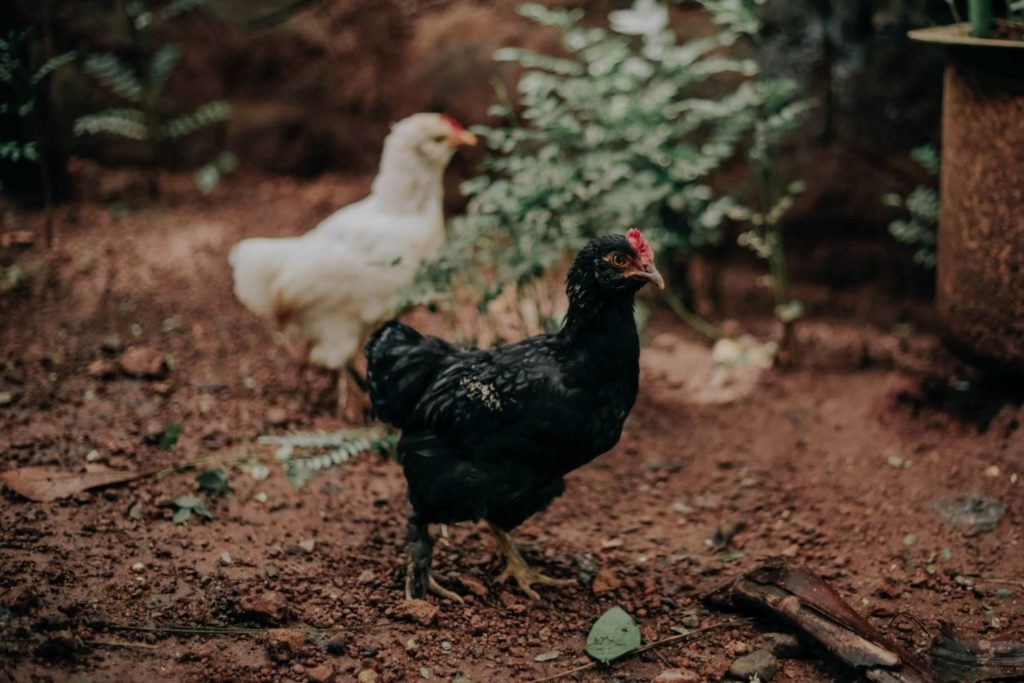
You don’t need us to tell you how cute the miniature version of anything can be. Miniature horses – adorable! Miniature pups – precious! Miniature chicken – cute as a button!
Everything about bantam chickens makes you want to pick them up and stroke their little feathers. What you probably didn’t know are all the perks that come with introducing them to your flock, besides making everyone who sees them go, “Awwww!”
What is a bantam chicken, and why should you consider rearing them? Here’s everything you need to know.
What Are Bantam Chickens
A bantam chicken is a miniature version of a regular-sized chicken. A typical bantam chicken size is anywhere between 30% and 50% that of a regular chicken. Don’t be fooled by their small size, though. They have pretty big personalities. If you’ve been around a bantam rooster, then you know what we’re talking about.
Speaking of bantam roosters, these beauties weigh as little as 13 ounces (369g) for the tiny Serama to 39 ounces (1,106g) for the larger Brahma – which is still less than half the size of a medium-sized chicken. Smaller bantams measure around 8-10 inches in height, while taller breeds typically measure about 16 inches.
Compared to a bantam hen, roosters have a bit of a voracious personality, although some breeds like the Japanese bantam are a little more reserved and docile. Despite this, their small size makes them easier to control, so you don’t have to worry about them running amok. Raising them is more or less the same as bringing up any full-sized chicken.
Silkie, Japanese, Polish, and Dutch bantam chicken breeds are known to be laid back. They would be more willing to let you cuddle them or feed them by hand.
Bantam Chick Identification
If you’re new to bantams, trying to figure out which breed is which can be a daunting task if you don’t know what to look for. Here are some helpful tips you can use to identify them if they hatched from a mixed flock.
Size
As far as day-old chicks go, bantam chick breeds are generally significantly smaller than standard chicks. After about three weeks, they’ll all be a little bigger, naturally, but bantam chicks will still be much smaller than regular chicks. They also have fine, fur-like feathers, unlike regular chicks, whose feathers will be slightly more pronounced at that age.
Feet
The next thing to check for is the feet. There are two main things you’ll be interested in. First, is the bantam breed “feather-footed?” If it is, you’ll notice a bit of fluff on its feet. Second, is it “clean-legged?” If it is, its feet are going to be bare.
Brahma, Silkie, and Cochin bantam chicks usually have feathered feet making it easy to identify them. On the other hand, Sebright, Japanese, and Partridge Rock bantam breeds are a few examples of clean-legged varieties.
Head and Cheeks
The other thing to look out for is the presence of knots of feathers on their head that look like little pouf balls. More often than not, chicks with this feature will be either Polish, Silkie, Houden, or Appenzeller Spitzhauben bantams.
Araucana (Easter Egger) bantam chicks also have a little extra fluff on their cheeks.
Egg Shells
Brahma, Cochin, Cornish, and Old English Game chicks hatch from brown eggs. On the other hand, Sultan, Silkie, Japanese, White Crested Polish, Black Rose Comb, Sebright, and Belgian D’Uccle bantam chicks, all hatch from white eggs. Araucana chicks are the only varieties that hatch from bluish-green tinted eggs.
That being said, how big is a bantam chicken egg? It ultimately depends on the breed. In most cases, they weigh 1 to 1.25 ounces or less. In other words, they’re very tiny. They’re a third to half the size of a regular egg.
Color
This is arguably the least effective way to identify bantam chicks, but it works if you know what physical traits to look for. The downside is – you’ll have to wait several weeks until the fluff is completely gone and the feathers start to grow out, revealing their unique patterns.
Benefits of Bantam Chickens

Aside from being adorable, there are several other advantages of keeping bantam chicken. Below are our top ones.
Space
Since they are half the size of regular chickens, bantams take up significantly less space compared to their standard-sized counterparts. If you have a smaller coop or chicken run, these might be a better option for you.
Easy Handling
Their small size and short legs make them easier to catch and handle when they’re out free-ranging. They also make kid-friendly pets!
Money Savers
Given their size, they use up fewer resources compared to regular-sized chickens. They don’t need quite as much space, food, or treats, saving you loads of cash in the long run. Not to mention that they help keep insects under control, and their droppings make excellent fertilizer.
Lots of Variety
Bantam chickens come in all shapes, sizes, colors, body types, and personalities. It all comes down to what you like. Cochins are generally very friendly and, quite frankly, the most entertaining of all the breeds we’ve come across.
Introducing Bantams to Flock
If you have no option but to keep your bantam chicken with your regular-sized flock, there’s a way to do it. For starters, put them in a pen or cage where the rest of the flock can see and interact with them without endangering the bantams. You should also never put two roosters of either breed in the same coup. There’s a good chance they’ll end up fighting to the death.
The same applies to introducing bantam hens to a flock of regular-sized hens. Again, put them in a separate pen, and then integrate them slowly until they’ve established the natural pecking order. Don’t leave them unsupervised until this happens.
The rule of thumb is to gradually introduce them to the flock and monitor their interactions until they’ve fully integrated.
Can a Bantam Rooster Breed a Standard Hen
He will certainly try! Whether or not he makes the connection required to fertilize the eggs is a whole other question. Because of the size difference between the two birds, a bantam rooster may not reach a full-sized hen. If it did, the size results of the fertilized eggs might be unpredictable.
Do you need advice on how to keep your chickens healthy? Use our online Vet Chat right now to consult with a qualified veterinarian.
In the meantime, are you thinking of getting a caique as a pet? Here’s what you need to know.


